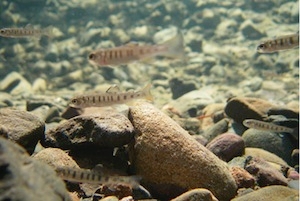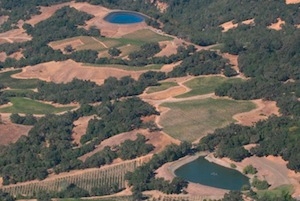The competition between farmers and fish for precious water in California is intensifying in wine country, say biologists at the University of California, Berkeley.
Juvenile steelhead trout, shown here in a small stream pool, are hit hard when water levels are low. (Ted Grantham photo)
The researchers found that juvenile steelhead trout are particularly at risk during the dry summer season typical of California’s Mediterranean climate. Of the juvenile steelhead trout present in June, on average only 30 percent survived to the late summer. In years with higher rainfall and in watersheds with less vineyard land use, the survival of juvenile trout over the summer was significantly higher.
The researchers pointed out that salmon and trout conservation efforts have not adequately addressed summer stream flow. Previous studies have highlighted other limiting factors such as habitat degradation and water quality, while this study documented the importance of water quantity for restoring threatened populations.
Aerial view of vineyard agriculture in Sonoma County. Vineyards that divert water from streams used by juvenile salmon and steelhead trout could reduce their impacts by storing winter rainfall in small ponds such as the ones seen in this photo. (Adina Merenlender photo)
Grantham says he is not suggesting we get rid of vineyards. “But we do need to focus our attention on water management strategies that reduce summer water use. I believe we can protect flows for fish and still have our glass of wine.”
Posted on
Friday, May 18, 2012 at
10:20 AM
- Author:
Ann Brody Guy
- Adapted from an article by:
Sarah Yang



